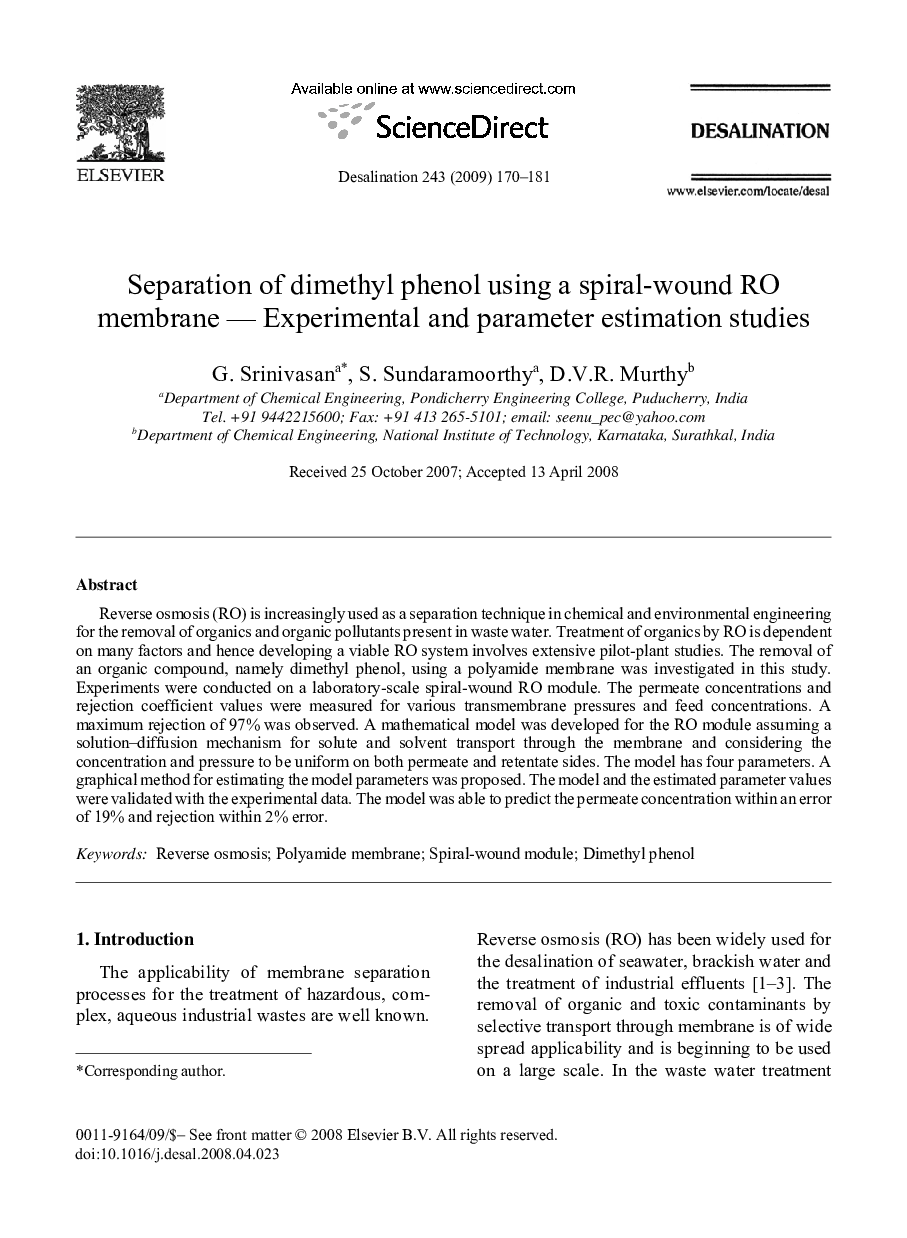| Article ID | Journal | Published Year | Pages | File Type |
|---|---|---|---|---|
| 626749 | Desalination | 2009 | 12 Pages |
Abstract
Reverse osmosis (RO) is increasingly used as a separation technique in chemical and environmental engineering for the removal of organics and organic pollutants present in waste water. Treatment of organics by RO is dependent on many factors and hence developing a viable RO system involves extensive pilot-plant studies. The removal of an organic compound, namely dimethyl phenol, using a polyamide membrane was investigated in this study. Experiments were conducted on a laboratory-scale spiral-wound RO module. The permeate concentrations and rejection coefficient values were measured for various transmembrane pressures and feed concentrations. A maximum rejection of 97% was observed. A mathematical model was developed for the RO module assuming a solution-diffusion mechanism for solute and solvent transport through the membrane and considering the concentration and pressure to be uniform on both permeate and retentate sides. The model has four parameters. A graphical method for estimating the model parameters was proposed. The model and the estimated parameter values were validated with the experimental data. The model was able to predict the permeate concentration within an error of 19% and rejection within 2% error.
Related Topics
Physical Sciences and Engineering
Chemical Engineering
Filtration and Separation
Authors
G. Srinivasan, S. Sundaramoorthy, D.V.R. Murthy,
